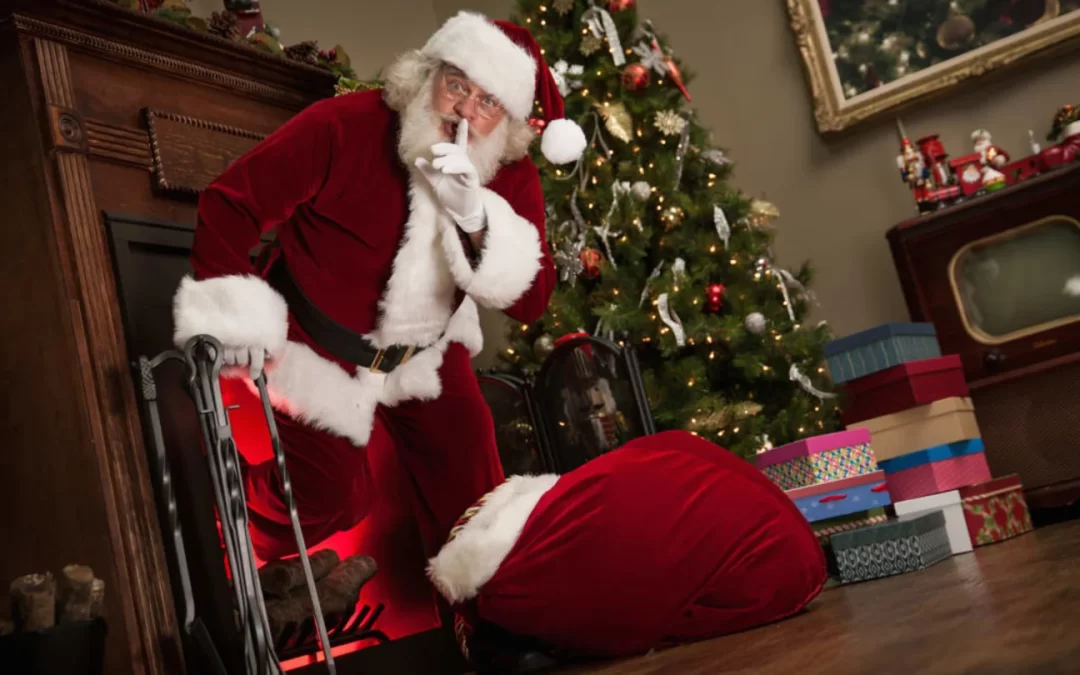Is your chimney ready for the arrival of Santa Claus? A clean and clear chimney may be as important to Santa Claus as homemade sugar cookies and milk. With the following three steps, you will ensure a Santa-Claus-friendly chimney and also help to protect your home and family from potential danger.
Chimney Cleaning
Chimney sweeping is an important way to create the right environment for Santa, especially if you have a wood-burning fireplace. Flammable creosote is deposited in the chimney lining every time there’s a wood fire. The tar-like substance builds up over time. When chimney cleaning is neglected, creosote can even create a chimney obstruction. This results in a smoky fireplace that exposes the family to toxic fumes.
Annual chimney cleaning is recommended by the National Fire Protection Association (NFPA). Other leading fire safety experts recommend chimney sweeping once the creosote has built up to 1/8”. If you use your fireplace frequently, you may need to schedule chimney cleaning in the middle of winter.
When experts clean your chimney, you don’t need to worry that the sooty gunk will make a mess in your home. A special vacuum and proven procedures are used to ensure that while your chimney flue is being cleaned, your home stays the way chimney professionals found it when they arrived. You just need to move delicate items and things like Christmas stockings from the immediate area before the experts arrive.
Chimney Inspection
The fire safety experts agree that chimney inspections should be scheduled annually. Without an inspection, there may be debris in your chimney. Of course, your chimney isn’t Santa-Claus-friendly if the jolly old elf gets tangled up with tree limbs or encounters a frightened or dead animal in the chimney. Thousands of chimney-related fires occur every year, and a significant percentage of them happen because of chimney blockage that results in out-of-control chimney fires.
A chimney inspection is also the best way to discover whether the flue lining is intact. If there is any damage whatsoever, the liner must be repaired or replaced. Otherwise, the home is vulnerable to exposure to deadly toxic fumes and a dangerous, quick-burning house fire.
Burn Seasoned Wood
Seasoned firewood is the only kind of fuel that’s safe to use for fires in a wood fireplace or wood stove. “Seasoned” means that the wood has a low moisture content of 20% or below.
It takes firewood anywhere from six months to a year or more to dry out sufficiently. If you’re in doubt about the amount of moisture in your firewood, you can invest around $20 to get a moisture meter.
Seasoned wood burned in a properly functioning fireplace or wood stove burns cleaner than green wood, which leaves excess creosote in chimney liners. If you burn green or unseasoned wood, the liner will be more clogged with creosote and Santa Claus may just leave you a lump of coal in your stocking.
Contact us
St John Chimney Sweeps Address 1613 Reed Rd D1, Pennington, NJ 08534 Proudly Serving Mercer County, Somerset County, Hunterdon County, & Surrounding Areas
Website http://www.stjohnchimneysweeps.com/
Email: stjohnchimneysweeps@verizon.net Phone Number: (609) 737-0133

